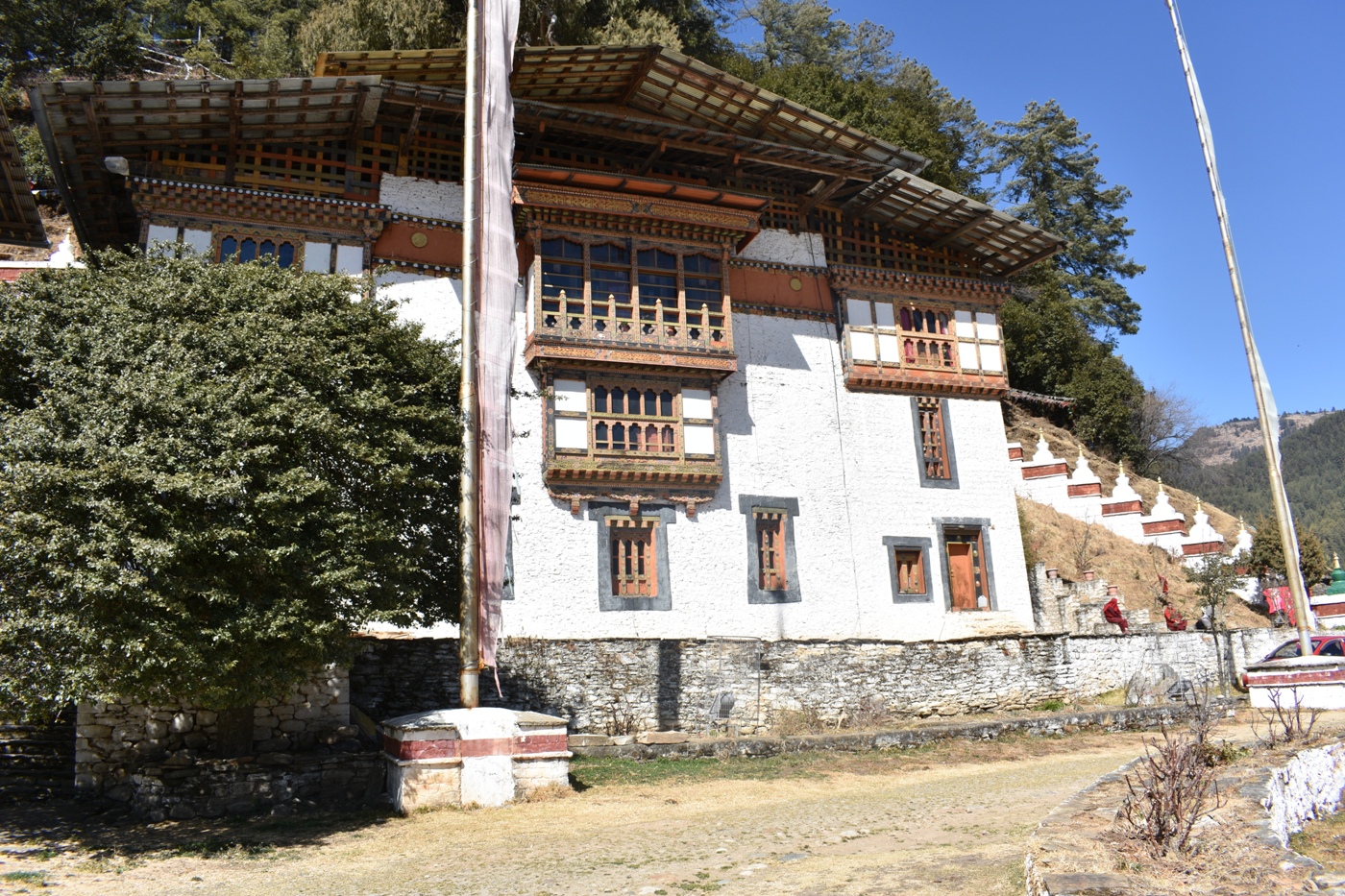Bhutan’s historical period begins at about 747 A.D., when the revered religious leader Guru Padma Sambhava came from Tibet and introduced Buddhism to the country. Known also as Guru Rimpoche, this remarkable man almost as highly esteemed as Buddha himself in Bhutan is credited with various events. It is said that he flew to Bhutan on the back of a tiger, and that at Taktsang he conquered the demon spirits that were standing in the way of the spread of Buddhism. It is more certain that he visited Bumthang in central Bhutan, where he cured the ailing King, and various places in the Paro valley, and that he and his later followers meditated in a cave on the cliff where the Taktsang monastery now stands. In Bumthang, the Kurje temple was built at the spot where Padma Sambhava had meditated, his fingerprints and footmarks appeared etched into solid rock, and where a cypress tree (which still stands) sprouted from his staff.

During the whole of the period from the first introduction of Buddhism into Bhutan, and possibly well before, it seems likely that Bhutan existed as an independent entity, within similar natural boundaries to those that exist now.
The pattern of Buddhism has changed considerably over the centuries, influenced particularly by emigrants from Tibet. Later, Bhutanese sects developed their own forms of the religion. Dominant amongst these has been the Drukpa sect of Kagyupa, a branch of Mahayana (“Greater Vehicle”) and now the official religion of Bhutan.
Up to the present, there have been four kings of Bhutan, and the present ruler Jigme Singye Wangchuck is clearly as popular as the previous three. Because of the way in which the monarchy assumed certain aspects of the pre-existent theocracy, many customs and symbols serve to underline the sacred nature of kingship and its remote position high above the world of ordinary mortals. However, alongside this there exists a complimentary tradition requiring the King to be wholly accessible to his people. Any subject, however low, has the right to present a grievance. The present monarch, very much like his father before him, chooses to live very simply with a minimum of ceremony, and is far more concerned with the welfare of his subjects than court ritual.
